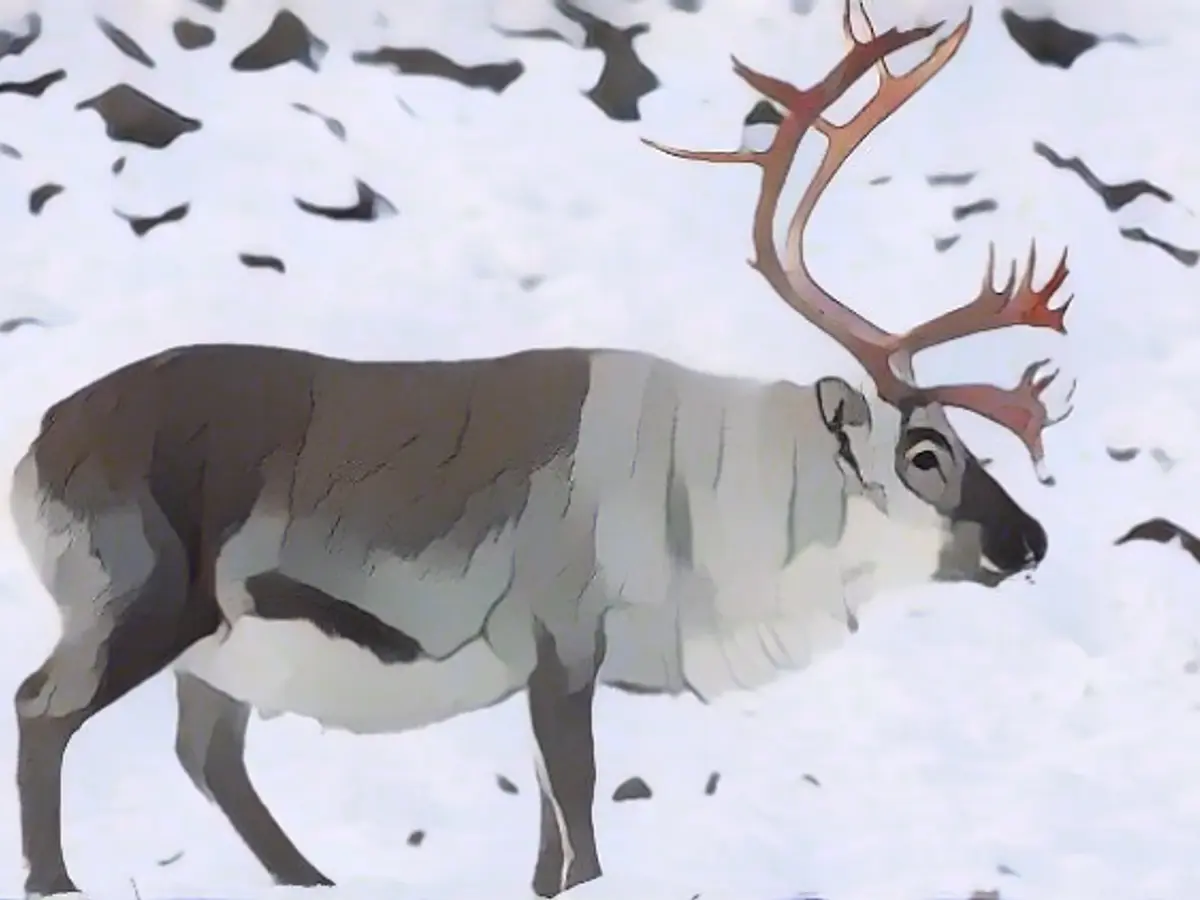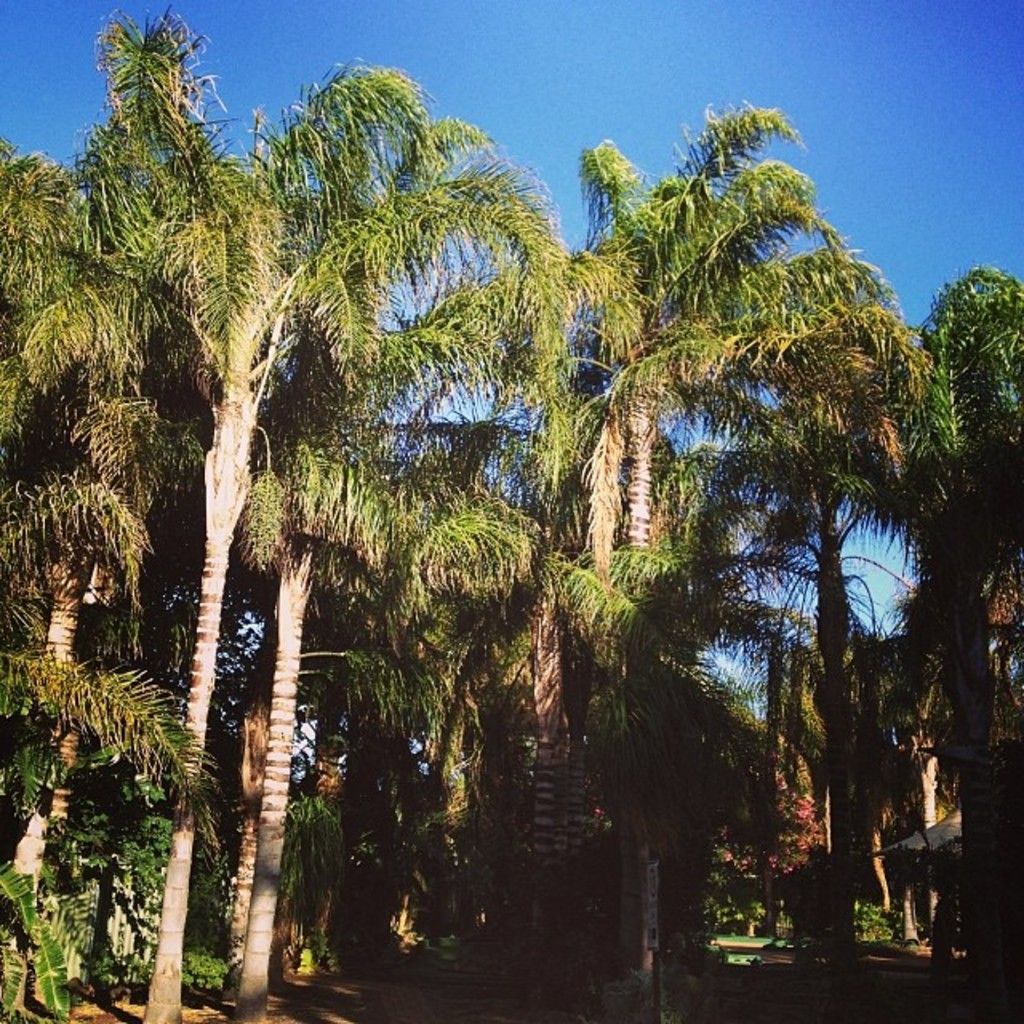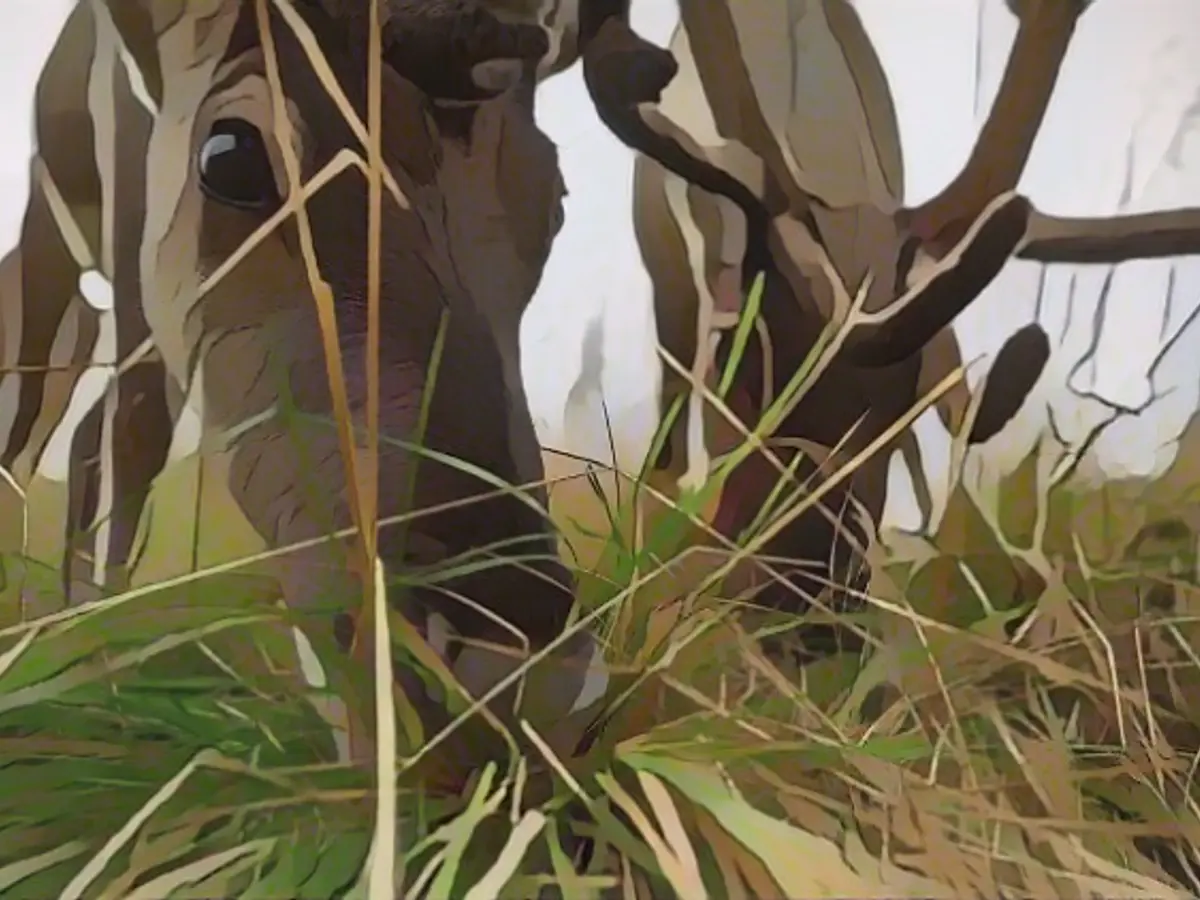Reindeer Struggle in Warming Climates 🎄❄️
Reindeer in northern Norway are facing numerous challenges due to the changing climate, causing a significant impact on their food availability and migration routes.
The Norwegian University of Science and Technology (NTNU) shares concerns about the potential problems with young reindeer. Anna-Laila Danielsen, who has earned her master's degree by researching this issue, points out that warmer temperatures may no longer allow lakes and rivers to freeze over in time for the reindeer's migration. This results in disrupted migration routes and causes additional strain on the herders.
Reindeer typically live in tundra and taiga regions, being the only domesticated deer species. The breeders have reported to Danielsen that thin ice sometimes lacks a layer of snow, causing the reindeer to easily mistake it for solid ice. This leads to devastating consequences as the animals collapse when attempting to cross it. To address this issue, some breeders are considering constructing bridges for the reindeer to safely navigate across the ice.
Warming temperatures and reduced permafrost are negatively impacting reindeer in various ways. The fluctuating winter temperatures lead to the formation of several thin layers of ice on top of the snow, making it hard for the reindeer to reach the food beneath. As a result, herders have to purchase and deliver additional food, a costly and time-consuming endeavor.
Crowding at feeding sites is another issue. Dominant reindeer keep other animals away from the food. In a natural environment, the weaker reindeer can easily disappear, but artificial feeding sites do not provide this opportunity. Some breeders have developed specialized feeding devices to prevent crowding and ensure equitable food distribution.
Related Articles:
The international community recognizes the growing impact of climate change on reindeer populations. Norway is one of the most affected countries, with the warmer climate and reduced permafrost causing significant challenges for reindeer breeders.
Given this dire situation, Norwegian breeders look to innovative solutions to safeguard their herds. Some of these strategies include constructing bridges for the reindeer to walk across thin ice and using specialized feeding devices to prevent crowding and ensure food distribution.
Sources:
Additional Insights:
- Reduced Pasture Quality and Availability:
- Warming temperatures are causing an increase in icing of pastures in the Yamal region, reducing food quality and availability for reindeer. This results in mass reindeer mortality.
- Shift in Migration Routes:
- Warmer temperatures are leading to altered migration routes and habitats for reindeer, with reindeer herders in Yamal struggling against the consequences of gas industry infrastructure expansion and fishermen’s encroachments.
- Increased Vulnerability to Extreme Weather Events:
- Reindeer herders in northern Norway are experiencing more frequent and severe weather events such as ROS events, which lead to mass reindeer mortality. This heightened vulnerability is caused by the rapid warming of the Arctic.






